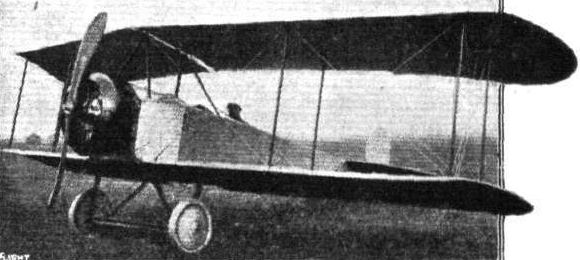Форум Breguet's Aircraft Challenge
The machine was built by the Deutsche Sommer-Flugzeugwerke GmbH in Darmstadt in 1914. The firm was directed by Robert Sommer who was not related to the famous French early flier and aircraft builder Roger Sommer. This firm was no licence firm for building the French machines in Germany, but actually built 5 different machines from 1911 till 1914.
This machine is from 1914, fitted with a 100 hp Gnome rotary and it participated in the Prinz Heinrich Flug 1914, of which more later. I have information that England ordered 25 examples, which were not delivered owing to the war.
Журнал Flight
Flight, June 5, 1914.
THE PRINCE HENRY CIRCUIT, 1914.
MACHINES IN PRINCE HENRY CIRCUIT.
The Sommer Arrow Biplane. - The German Sornmer Aircraft works have brought out a new Arrow type biplane for the Prince Henry Circuit. It is chiefly interesting on account of the fact that it is fitted with a rotary engine - a 100 h.p. Gnome - enclosed by an aluminium shield. In the bottom of this shield an opening has been cut in order to allow the exhaust gases to escape. In designing this machine, great attention has been paid to accessibility and ease of dismantling of the wings, an operation requiring only a few minutes' work.
Flight, September 18, 1914.
AIRCRAFT "MADE IN GERMANY"
WHICH MAY BE EMPLOYED AGAINST THE ALLIES.
33. The Sommer Arrow Biplane
differs somewhat from previous products of the German Sommer Aircraft Works, and was specially built for this year's Prince Henry Circuit. It is chiefly interesting on account of the fact that it is designed to take a rotary engine, a departure from usual German practice.
Aerodynamically this machine presents but little in the way of novelty, being characterised by the usual form of backswept wings, of which the upper plane is of slightly greater span than the lower one. The top plane is divided in the centre, where its two component parts are attached to a cabane of the monoplane type, formed by four steel tubes resting on the upper longerons of the fuselage. The lower plane is set at a small dihedral angle, and is attached by quick-release devices to the fuselage. In designing this machine great attention has been paid to accessibility and ease of dismantling, an operation requiring only a few minutes' work.
Mounted between double bearings in the nose of the fuselage is a 100 h.p. Gnome engine, covered in on the sides by an aluminium shield in the bottom of which openings have been cut out in order to allow exhaust gases to escape. Immediately behind the engine are the petrol and oil tanks. To the rear of them are the two seats, arranged tandem fashion, the pilot occupying the rear one, from where he has an unrestricted view in a downward direction.
The stern post of the fuselage, which takes the form of a steel tube, is continued upwards to act as a pivot for the balanced rudder. No fixed vertical tail fin is fitted. The horizontal stabilising plane is mounted on the gunwales of the fuselage, and has hinged to its trailing edge a divided elevator.


